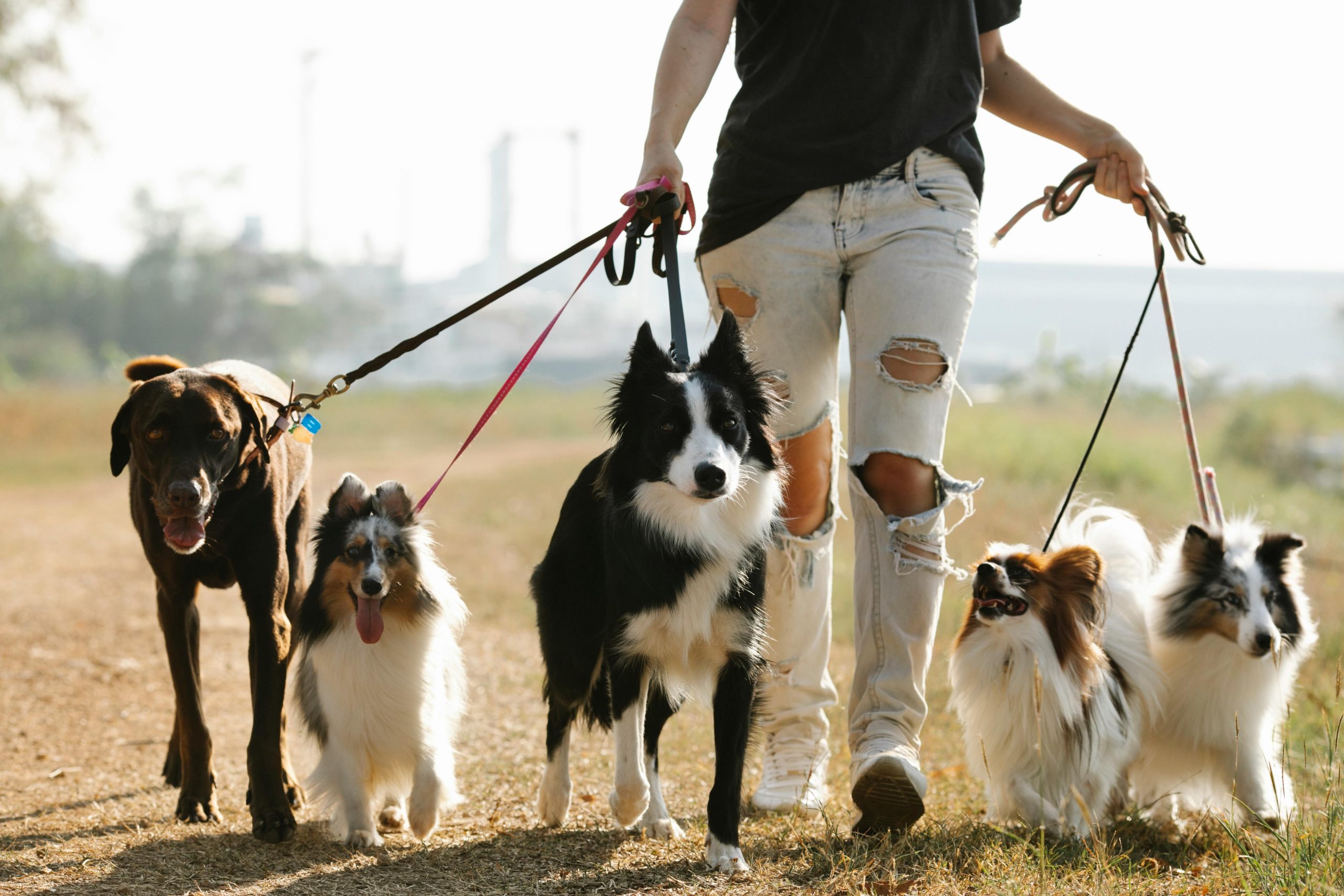
Training a dog to use a leash is an essential skill that enhances both the safety and enjoyment of your walks together. Knowing how to train a dog to use a leash ensures your pet is well-behaved, making outings more pleasant for both of you. Leash training is particularly important for maintaining control in public spaces and ensuring your dog’s safety.
This article provides a comprehensive guide to leash training, covering everything from choosing the right equipment to overcoming common challenges. Following these steps, you can successfully train your dog to walk calmly on a leash, enhancing your bond and ensuring a safe walking experience.
Choosing the Right Leash and Collar
The first step in leash training is selecting the appropriate leash and collar. The right equipment can make a significant difference in the training process. Choose a collar that fits snugly but comfortably around your dog’s neck. Consider a standard six-foot leash for leashes, which offers enough length for movement but allows for control. Avoid retractable leashes during training, as they can encourage pulling. Ensure the leash and collar are durable and suitable for your dog’s size and strength.
Check Out The Best Leashes For Your Dog In 2024
Introducing the Leash to Your Dog
Introducing the leash to your dog should be gradual and positive. Start by letting your dog sniff and explore the leash and collar. Attach the leash to the collar and allow your dog to wear it around the house without holding it. Reward your dog with treats and praise to create a positive association with the leash. This initial step helps your dog feel comfortable with the new equipment, smoothing the transition to outdoor walks.
Basic Commands to Teach Before Leash Training
Teaching basic commands like “sit” and “stay” can greatly aid leash training. These commands establish control and ensure your dog listens to you during walks. Practice these commands in a distraction-free environment and reward your dog for obeying. Consistent practice will reinforce these behaviors, providing a strong foundation for leash training. Once your dog reliably responds to these commands, you can begin incorporating them into your leash training sessions.
Step-by-Step Guide to Leash Training
Start Indoors: Begin leash training in a familiar environment like your home. Attach the leash and let your dog walk around while you hold it loosely.
Use Treats and Praise: Encourage your dog to walk beside you using treats and praise. Reward calm and obedient behavior.
Practice Short Sessions: Keep initial training sessions short, around 5-10 minutes, to prevent your dog from becoming overwhelmed.
Gradual Exposure: Gradually increase the duration and distance of walks. Introduce new environments slowly.
Address Pulling: If your dog pulls, stop walking and wait for them to return to you. Reward them when they return and walk calmly.
Consistent Commands: Use commands like “heel” or “let’s go” to guide your dog’s behavior on the leash. Be consistent with your cues and rewards.
Common Challenges in Leash Training
Leash training can come with challenges such as pulling, fear of the leash, or distractions. If your dog pulls, avoid yanking the leash. Instead, stop walking and wait for your dog to return to you. For dogs afraid of the leash, use gradual desensitization by allowing them to wear it indoors without pressure. Overcoming distractions requires patience; use high-value treats and gradually expose your dog to more stimulating environments.
Leash Training Tips for Different Dog Temperaments
Different dogs may require varied approaches to leash training. Puppies have short attention spans, so keep sessions brief and fun. Adult dogs may need more structured training, especially if they have developed bad habits. Rescue dogs might have past traumas; use gentle, positive reinforcement and be patient. Adjust your techniques based on your dog’s temperament to ensure a successful training experience.
The Benefits of Leash Training
Successful leash training offers numerous benefits. It enhances safety by ensuring your dog stays close to you and away from potential hazards. Leash training also provides better control, making walking enjoyable and less stressful. Additionally, it strengthens the bond between you and your dog as you learn to communicate and trust each other. A well-trained dog on a leash is a joy to walk and brings peace of mind to the owner.
Personal Stories and Testimonials
Hearing from other dog owners who have successfully leash-trained their dogs can be inspiring. One owner might share how consistent training transformed their dog’s behavior, making walks a pleasurable experience. Another might describe the challenges they faced and how they overcame them. These personal stories highlight the effectiveness of proper leash training techniques and encourage others to persist through difficulties.
Discover The 11 Best Collars For Your New Puppy
Conclusion: How to Train a Dog to Use a Leash
In conclusion, training a dog to use a leash is crucial for ensuring safe and enjoyable walks. You can successfully leash-train your dog by selecting the right equipment, introducing the leash positively, and using consistent training techniques. Overcoming challenges with patience and understanding your dog’s temperament will lead to a well-behaved companion. Embrace the training process, and soon, you’ll enjoy the benefits of walking your dog confidently on a leash.






